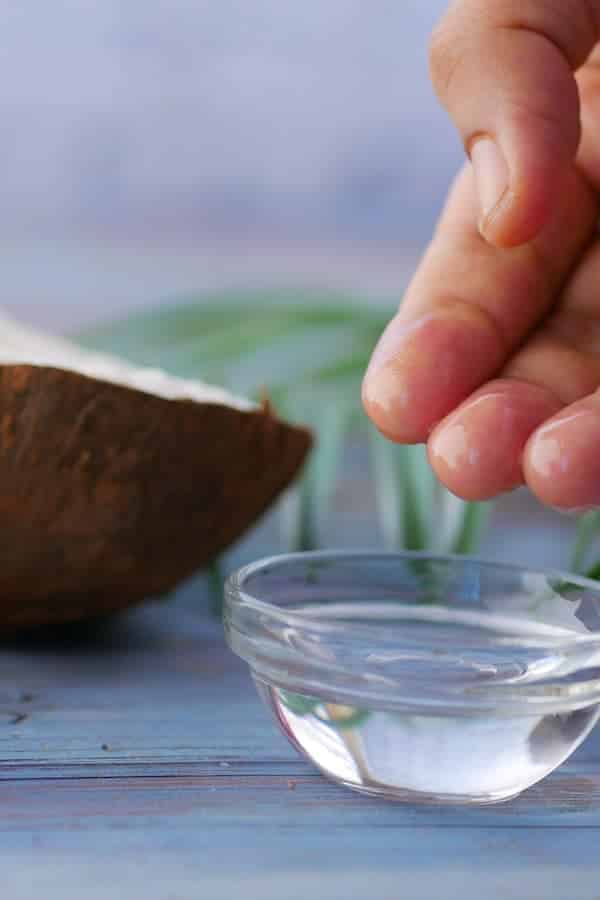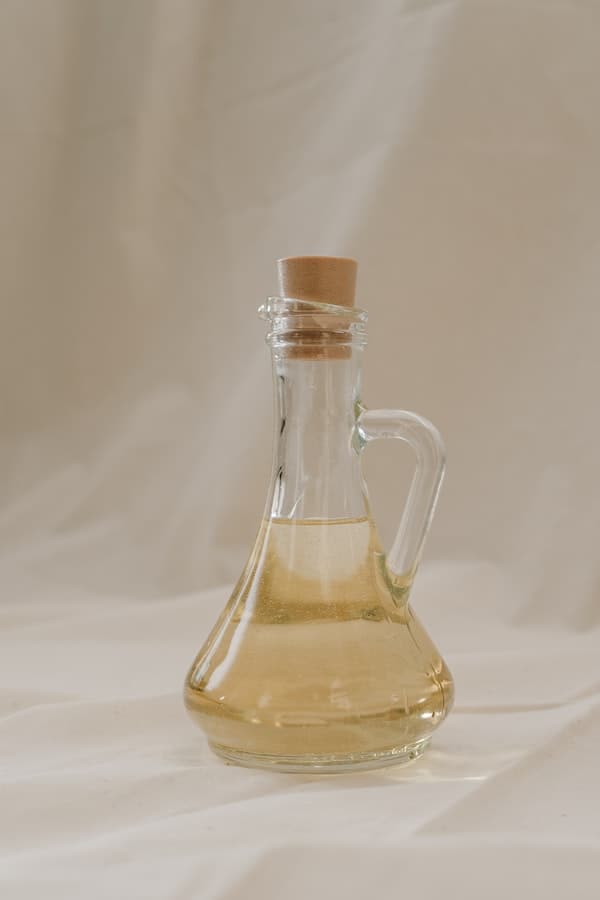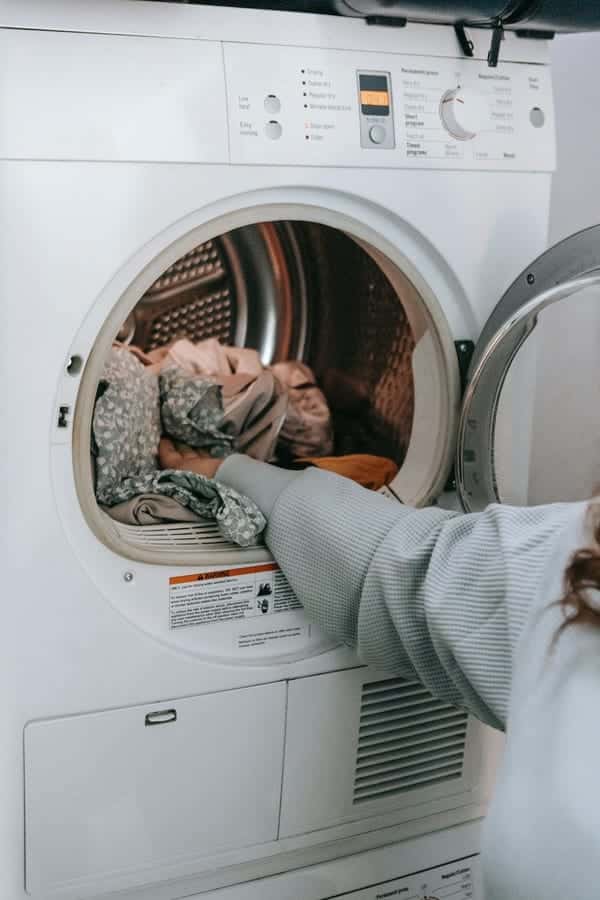Coconut oil has gained some fame in recent years and is now one of the most widely utilized oils. And for good reason.
Primarily, it’s used in the kitchen. Its hefty fat content means it’s great at high temperatures, more so than olive oil.
It’s popular for its taste too, as we all become more exploratory in our cooking ventures and crave the taste of Asia in our homes. Coconut oil is also a useful moisturizing agent and can be used for a wide range of beauty and skin care-related functions.
This is where things can get a little messy. The slick oil can easily transfer from your skin to your dry, oil-hungry clothes. Leaving you with a little oily mark on your T-shirt and a not-so-little question of, is this stain going to come out?
- Does Coconut Oil Actually Stain your Clothes?
- How Easily do Coconut Oil Stains Come out of Clothing?
- How to Remove a Fresh Coconut Oil Stain
- How to Remove Old, Dried Coconut Oil Stains from Clothing:
- What do I do if the garment is delicate?
- How do I remove coconut oil from suede?
- Final thoughts.
There may be affiliate links in this article. You can read more about this in my disclosure.
Does Coconut Oil Actually Stain your Clothes?

We all know fat tends to stain, leaving nasty, stubborn grease marks on anything it touches. And sadly, coconut oil acts in a similar way.
Coconut oil has a high percentage of saturated fat, and this fat content is what seeps into fabric. It’s not just clothing: any cotton, wool, or man-made fiber is at risk of being tainted by the delicious oil.
Coconut oil can appear hardened and white when it’s cold, but when it’s warmed up, becomes a slick, wet oil. The human body temperature is enough to melt the oil.
So you may go from gently scooping out a hard piece of oil to massage into your skin one minute, to trying to catch droplets of oils from sliding off and landing on your nice new jeans.
If the oil has come into contact with your clothing, it will leave clear, blotchy patches. Unsightly and inconvenient, but not permanent if you take action.
Coconut oil doesn’t ruin clothing or cause damage usually, and most stains can be tackled using a variety of methods. The best methods will be outlined below, so keep reading if you’ve had an oily accident.
How Easily do Coconut Oil Stains Come out of Clothing?

Sadly, it’s not as simple as throwing your garment in the washing machine and the stain disappearing. A few extra steps are needed to eliminate the unsightly marks.
The newer the stain the easier it is to remove. So be proactive, and take immediate action if possible.
Unless you’re out in public, in which case, don’t take off your clothing, it’s not worth exposing yourself!
There are a number of different methods to try, so don’t be too disheartened if the first one you try doesn’t leave your clothes looking as good as new.
How to Remove a Fresh Coconut Oil Stain
If you’ve had an accident in the last few hours, you’re in luck. Generally speaking, the earlier you act, the better the results.
What you need to remove a fresh coconut oil stain:
- Clean, white towel or paper towel.
- Cornstarch or baking soda.
- An old or cheap toothbrush. If not, your finger will do.
- Dishwashing soap.
What you need to do:
Step 1: Dab the coconut oil stain to absorb any excess oil.
- You must use a plain white towel or paper towel!
- Coconut oil is so clingy and wet that it can lift color from other fabrics, and make your grease stain even more eye-catching and colorful.
Step 2: Scatter the cornstarch or baking soda onto the stain.
- Hopefully, you already had either one of these ingredients in your house so you could get to this step ASAP.
- Don’t be scant with the powder, apply it liberally onto the stain.
Step 3: Work the stain.
- Use a toothbrush or just your finger to massage the cornstarch or baking soda into the stain.
Step 4: Watch the magic happen.
- Make sure the stain is still covered with the powder and let it sit.
- As the powder absorbs the oil, it will darken in color. Add more powder as this happens until it appears to stop absorbing anymore.
- This step should take around 15 minutes.
Step 5: Clean up.
- Brush or scrape off the powder.
- You may need to repeat steps 2-4 if the stain is particularly stubborn.
- Apply a little dish soap to the stain.
- Wash the garment in the washing machine at a very high heat. The heat will help melt the remainder of the oil, helping it to vacate your garment.
Step 6: Dry.
- Let the clothing air dry. And et voila! Your stain should have disappeared.
How to Remove Old, Dried Coconut Oil Stains from Clothing:

If you have an old coconut oil stain, you may have been reading this article nervously as we emphasized the importance of acting quickly. And this is true, it is definitely much easier to remove a new oil stain.
But this doesn’t mean old stains are impossible to remove, you just need to act a little differently, and with a little more elbow grease (pardon the pun!).
Oil and water aren’t good friends, and often water can just exacerbate the problem. So, hold fire on the classic soap and water combo, and follow these steps.
What you need:
- Piece of cardboard.
- Clean, white towel or paper towel.
- Dish soap.
- A toothbrush or soft-bristled brush.
What you need to do to remove an old coconut stain:
Step 1: Place a piece of cardboard underneath the stain.
- We are going to do a bit of scrubbing later on, so it’s best to protect the rest of your garment from unnecessary wear.
Step 2: Dab the stain.
- With any kind of oil accident, you want to remove any excess liquid.
- Again, use a white towel as the oil may lift the color if not.
Step 3: Apply some dish soap.
- Washing up detergent is made to attack the grease on your pots and pans, and it can do the same thing for your clothing.
- Put a few drops on the stain and let sit for a few minutes. The garment will absorb some of the soap and start penetrating deeper into the stain.
Step 4: Brushing.
- Take a soft brush and work the soap into the stain. Try not to brush outside of the stained area, as it may cause unnecessary damage to the garment.
- Let sit for 10-15 minutes.
Step 5: Rinse.
- Okay, now that we have spent some time addressing the oil stain whilst it’s dry, we can now introduce some water.
- Rinse the stain under warm water.
- If the stain is still very visible, you can repeat steps 3-5.
Step 6: Wash.
- Wash the item in the washing machine on a hot cycle, and your stain should have been lifted!

What do I do if the garment is delicate?
Some of the methods outlined involve brushing or rubbing, which can wear away and even create holes in delicate fabrics, such as silk.
Many fabrics can’t handle a hot wash either. So, it’s a question worth asking!
The best method for removing coconut oil stains from delicate items of clothing:
- Apply unscented baby powder to the stain. This will act in a similar way to the baking soda but will do so more gently.
- Let sit for a minimum of 1 hour and up to 12 hours.
- Gently rub it off with your finger.
- Apply a drop of dish soap to the stain, and wash on the appropriate setting for the material.
How do I remove coconut oil from suede?
Suede is a thick, thirsty material that will lap up any liquid it gets close to. Despite this, it doesn’t react well with water or oils and needs immediate attention.
Treat it similarly as you would silk, and apply baby powder or cornstarch. Let soak overnight, then brush away the powder with a soft brush.
Don’t wash the suede or apply soap, as it will just make things worse.
Simply re-apply the baby powder or cornstarch if the stain persists and brush it off. This should lift the stain.
Final thoughts.
With the varied usage of coconut oil, it’s bound to make its way onto your clothing at some point. It’s a relatively cheap all-rounder product for your home, but it does need to be treated with care.
With a little research, effort, and patience, most coconut oil stains can be conquered.
So next time you get a splash of coconut oil on your clothing, don’t panic. The methods in this article are bound to work on almost any stain.
Last update on 2024-04-23 / Affiliate links / Images from Amazon Product Advertising API










